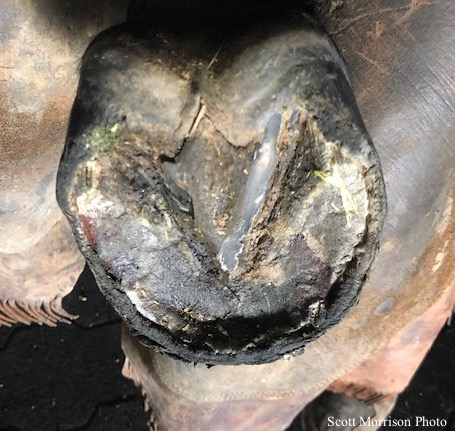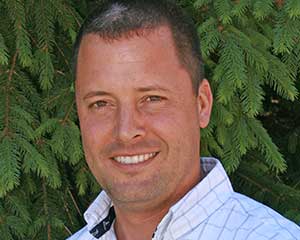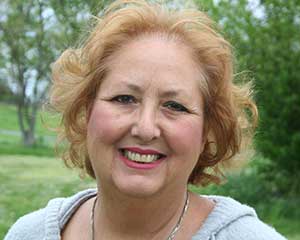
by Denise Steffanus
This year's wet weather and seemingly endless mud are wreaking havoc on horses' feet. Dr. Scott Morrison, head of the podiatry department at Rood & Riddle Equine Hospital in Lexington, Ky., said he has seen more cases of retracted soles this year than ever before. In addition to Kentucky, he is aware of cases in Virginia, Tennessee, and Indiana, and he suspects it is a problem in other parts of the country.
A retracted sole starts out with a thin sole. Then when the horse spends days or even weeks standing in mud while turned out, the sole weakens and the mud shoves it upward into the coffin bone, the main bone in the foot. This causes severe pain and lameness, eventually forming a large seroma (fluid-filled pocket) under the sole that can progress into a subsolar abscess or worse if untreated.
Horses with thin soles, predominantly Thoroughbreds, are most susceptible to retracted soles. Combine Kentucky's signature breed with its signature limestone-and-clay soil, and you have the perfect storm to create retracted soles.
“It seems like soil that is mixed with a lot of Class-I sand or fine gravel, like that around gates or water tanks, seems to be a big culprit,” Morrison said.
Class-I (pronounced “class-eye”) sand is a crushed-limestone product used to form a hard surface where horse traffic creates a mud hole. The crushed limestone starts out looking like cat litter, but when it absorbs water, it sets up almost like concrete. If the soil underneath the Class-I sand is largely field clay, the sticky mixture readily packs in the horses' feet and stays there.
Read the entire article on The Paulick Report. This excerpt is published here with permission.

Dr. Scott Morrison is a 1999 graduate of the Virginia Maryland Regional College of Veterinary Medicine. He is also a graduate of the Eastern School of Farriery and built a successful farrier business prior to enrollment at Virginia Tech. Following graduation in 1999, Dr. Morrison completed a one year hospital internship at Rood & Riddle Equine Hospital in Lexington, Kentucky.
Following the internship, he was hired by Rood & Riddle as an associate veterinarian and began to develop Rood & Riddle’s Podiatry department. Today, Dr. Morrison, who is now a partner at Rood & Riddle, oversees the Rood & Riddle Podiatry Center. His schedule includes travel throughout the United States and Europe to consult and lecture.

Denise Steffanus is the 2017 Eclipse award winner, freelance writer, and editor based in Cynthiana, Kentucky. A longtime contributing editor for Thoroughbred Times, she earned the prestigious Michael E. DeBakey Journalism Award and the USA Equestrian (now the U.S. Equestrian Federation) Award for Media Excellence. Steffanus, a Pittsburgh native, is a licensed Thoroughbred racehorse trainer and a member of American Mensa.
Find articles like this and other relevant information in our section on Health & Education.

































